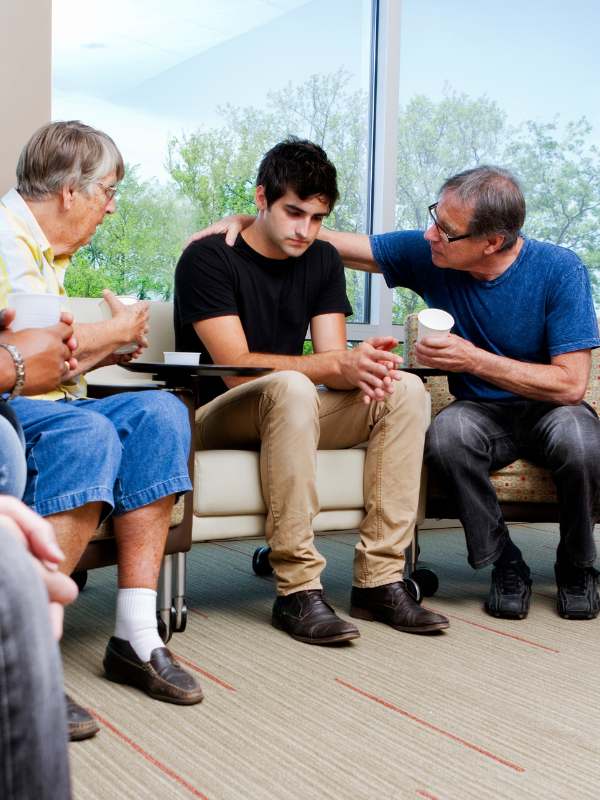How Do I Know If I Have a Mental Illness?

All people experience mental health struggles at different times in their lives. Many individuals experience anxiety, sadness, stress, difficulty sleeping, self-doubt, and relationship concerns related to different experiences and situations. Having these types of experiences and responses does not necessarily translate to having a mental illness, it is the impact these experiences and symptoms have on our functioning, as well as the length of time these distressing symptoms last, that determine whether someone is truly struggling with a mental illness.
According to the National Institute of Mental Health, one in five adults struggles with a mental illness. Mental illness is the term used to describe many conditions with a broad range of severity. The degree of severity will be determined by the illness’s impact on the individual and often has a direct relationship with the intensity of interventions and/or support needed to achieve relief.
Mental illness is a real medical problem. Individuals struggling with mental illness experience significant impairments to their functioning, including their ability to work, perform activities of daily living (ADLs), relationship satisfaction and success, family responsibilities, and co-occurring medical issues. A mental illness’s effect on an individual’s quality of life can be devastating, and the need for easily accessible screenings and referrals to care is necessary when managing mental illness’s impact on our society.
Fortunately, as technology improves our access to healthcare, individuals have more immediate methods of reaching out for support and screening. Telemental health is a platform for utilizing your cell phone or computer to access telepsychiatry and teletherapy, allowing an individual to receive screening for a mental illness and treatment from home without the delay of making an in-office visit. We have also seen an explosion in apps and support platforms that allow individuals to access support groups, utilize apps to track symptoms and behaviors, and access applications that can provide tools for coping with mental health symptoms virtually.
“While we have seen a renewed focus on mental health and a distinct reduction in the stigma associated with mental health treatment, especially after COVID-19, we still have a ways to go,” says Ben Brafman, chief clinical officer and co-founder of SBMHC. “Unfortunately, access to care is still limited, and many families do not understand that there are helpful resources and dedicated mental health centers to help treat their loved ones. We continue to see patients every day that have been misdiagnosed or have delayed their mental healthcare, making it that much harder to start the healing process.”
Getting the Right Diagnosis
Often, a person will receive a diagnosis of a mental illness when their symptoms have become severe enough to result in that person, or a loved one, reaching out to a professional to seek help. However, there may be times when an individual is unable to see or unwilling to acknowledge that they are struggling with mental illness. Loved ones and a support team must identify warning signs for the onset or exacerbation of mental illness to ensure appropriate and timely intervention and support. Some common warning signs include substance abuse, suicidal ideations, withdrawal from friends and family, significant and/or sudden change in behavior, physical problems with no obvious cause, lack of focus, and excessive worry or sadness.
Getting the right diagnosis is critical. With all that modern technology affords us, online mental healthcare can often miss subtle differences between diagnoses. For example, many bipolar patients are diagnosed as depressed. A borderline personality disorder is often misclassified as bipolar. Certain cues can only be interpreted in person, which can be the difference between a proper and erroneous diagnosis.
The eagerness with which individuals with a mental illness or their family wish to receive a diagnosis can also cause complications. Without questioning the diagnosis or getting a second opinion if “something doesn’t feel right,” many families rely on diagnoses from addiction treatment centers that may not have expertise in mental health. All too often, we see patients suffering through stint after a stint of residential, partial hospitalization care, and outpatient mental healthcare due to a delayed or missed diagnosis.
The Family Component
Regarding a proper diagnosis, the importance of the family component cannot be overstated. Families play a crucial role in the diagnosis of the mental health concern and its treatment. Families can provide us with crucial information that we can’t glean, having known the patient for such a short period of time. As such, family participation is one of the key elements of the SBMHC mental health program. We strongly believe that our comprehensive family program is crucial to the success of any mental health or therapeutic continuum of care.
Common Diagnoses
The most common types of diagnosed mental illness fall into the categories of mood or anxiety disorders, with depression disorder and generalized anxiety disorder being two of the most common mental illnesses in the United States. Although many individuals struggle with bouts of anxiety and depressive symptoms throughout their lives, it is when the symptoms reach a severity that an individual’s functioning and well-being are significantly compromised that a mental illness can be diagnosed.
Taking the first step toward getting help can be one of the most challenging actions of a person’s life. Identifying the signs that your symptoms have reached the point of needing professional help is crucial. These signs can include difficulty sleeping and changes in sleep patterns, appetite changes that result in weight changes, struggles with concentration, difficulty getting out of bed, loss of interest in things one used to enjoy, inability to perform usual tasks, withdrawal from family and support, and increase in substance use.
Next Steps
When you are ready to seek help or have a loved one that needs help, a first step can be to call your insurance company to see what your mental health benefits cover. Often, your insurance company can provide you with a list of providers and treatment programs they work with. Many insurance companies also offer and/or cover telemental health services, allowing you to schedule an appointment immediately. Ultimately, however, advocating for yourself or your loved one by doing your own research is the best way to get the right treatment from the right provider. The sooner you seek out help and start treatment, the more likely you are to experience symptom relief and prevent the potential for your mental health to decompensate further.
Here at SBHMC we accept insurance from Aetna, Cigna, Blue Cross Blue Shield, United Healthcare (UHC), Carelon, Magellan, NYSHIP, and more. For those without insurance, we also offer private pay options and are available to discuss a range of mental health treatment costs, such as therapy, IOP, residential treatment, private rehab, and both short-term and long-term rehab. If you’re seeking information on “Aetna therapy coverage,” “Blue Cross Blue Shield therapy coverage,” or specific details like “How much does counseling cost” and “How to pay pay for mental health treatment,” our compassionate team is here to assist you. Contact us today to explore your options and begin your journey to improved mental health.
If you are in a mental health crisis, call or text the Suicide & Crisis Lifeline at 988. This line is available 24 hours a day 7 days a week, and provides confidential support to anyone in a suicidal crisis or emotional distress. For emergencies, call 911. Contact us for non-emergent concerns and to talk to admissions specialists about how SBMHC can help.



